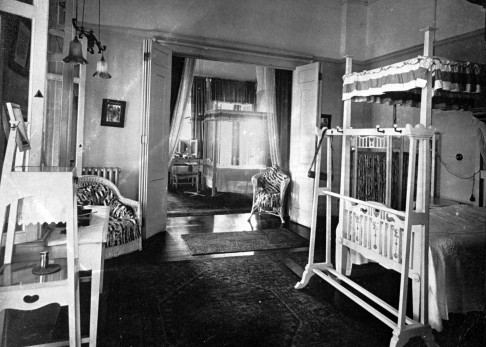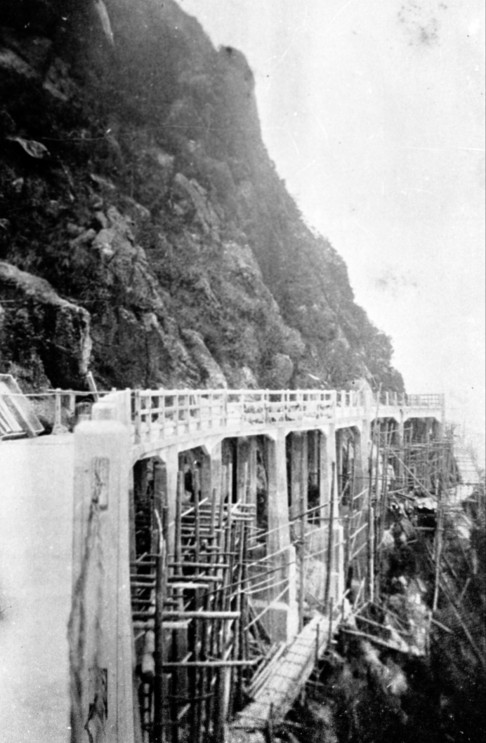
Take a Peak into the past: Controversy over hotel plans for century-old mansion at 27 Lugard Road
This mansion has survived 100 years and two world wars, and now its future has become the subject of a new battle. Step inside 27 Lugard Road
Walking into the century-old mansion at 27 Lugard Road is like going back in time. Sunlight shines through the tall windows onto the wooden floor and chandeliers in the entrance hall give visitors a glittering welcome.

Lugard Road is one of the most popular hiking trails in Hong Kong and traffic is rare as cars need a special permit to travel along it. Hikers fear hotel service cars would cause a traffic nuisance, but conservationists say developing the mansion would protect its heritage – and that the effect of the two golf carts per hour the hotel plans to use would be negligible.
The grade-two heritage building, built in 1914, was designed by Lennox Bird, a senior partner of prominent architectural firm Palmer and Turner, for his brother. It was sold to Tai Koo Dockyard and Engineering Company and became a residence for the company’s staff and their families.
Since then it has had its ups and downs.
Watch: Inside the 27 Lugard Road mansion
According to the Antiquities Advisory Board, the house was damaged by a typhoon in November 1939, when the roof cracked badly. When the Japanese invaded in 1941, a bomb hit its tennis court, where residents had buried the family silver.
The tennis court was later turned into a swimming pool, which will be demolished to make way for a new building if the hotel plan goes ahead.
The house also features banisters made of wood taken from the old Hong Kong Club on Jackson Road. Its study has hardwood panelling on the walls, and all floors are of varnished wood.

Ownership changed a few times before developer Crown Empire bought it for HK$384 million in September 2012.
Dr Joseph Yao Ki-fu, who lived there for 12 years from 1999, opposes the plan, saying the narrow road is not designed for heavy traffic and that cars belonging to the hotel would endanger hikers.

District Councillor Joseph Chan Ho-lim, who works with the alliance, said hikers could be “forced off the slopes” when the hotel’s cars went by. He also worried that the hotel’s septic tank could pollute the environment. “There are many ways of [conserving the building],” he said. “It could be turned into a museum or souvenir shop, so the traffic impact would be minimal.”
He said while the mansion should be conserved, the trail and environment were just as valuable. The alliance has placed petitions outside the mansion.
Hiker Heidi Li Pak-ling was against the plan. “The scenery here is beautiful, and it shouldn’t be only for rich people who can afford to stay in the hotel.”

However, Dr Lee Ho-yin, associate professor in architectural conservation at the University of Hong Kong, said developing the building into a hotel would help conserve it, noting that the house was completed in 1914, which marked the beginning of the first world war.
“The protesters are completely wrong. They are being misguided and misinformed.”

“If you maintain this building, it serves a number of purposes. It retains its architectural value and historical value. It’s not only protecting the value of the house itself, it also helps to protect part of the history of Hong Kong, because this building was designed by one of the oldest architecture firms in Hong Kong.”
Lee said developing the house into a hotel could add value to the building, and prevent it being torn down. If it was not protected, developers would build five luxury homes on the site that “nobody in Hong Kong can afford”.

He said the electric golf carts the hotel would use was unlikely to cause any traffic issues.
Lee said other developers could be unhappy about the hotel plan because it would change the type of development in the area and they could face more pressure when they wanted to redevelop heritage houses.
Turning the place into a boutique hotel, which generally had a lower property price than residences, could also bring down the property prices of other houses in the area, he said.
Carmen Poon Lai-king, managing director of Joyful Books who curated an exhibition on Lugard Road, said it was an important part of Hong Kong history. Work on the road, named after governor Frederick Lugard, started in 1913, and cost HK$50,000. Construction was difficult due to the steep rock walls and the lack of proper roads.

